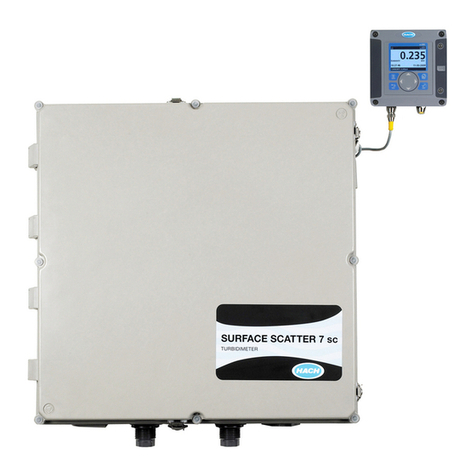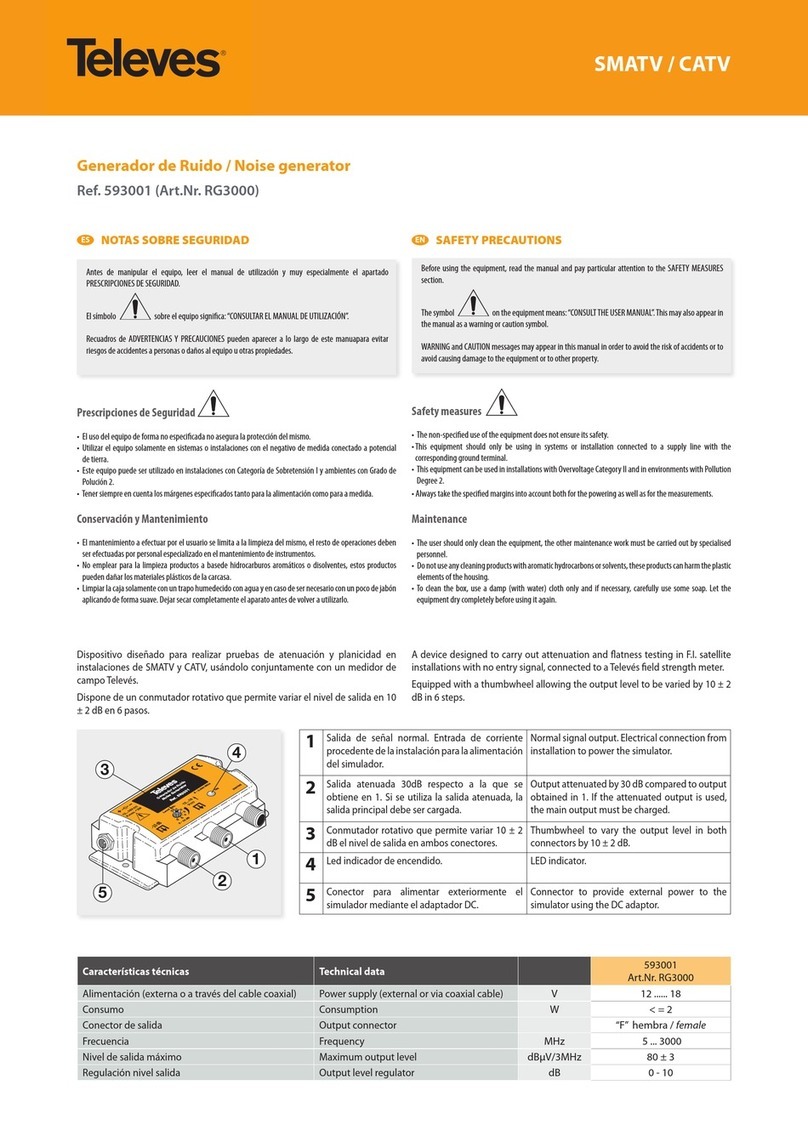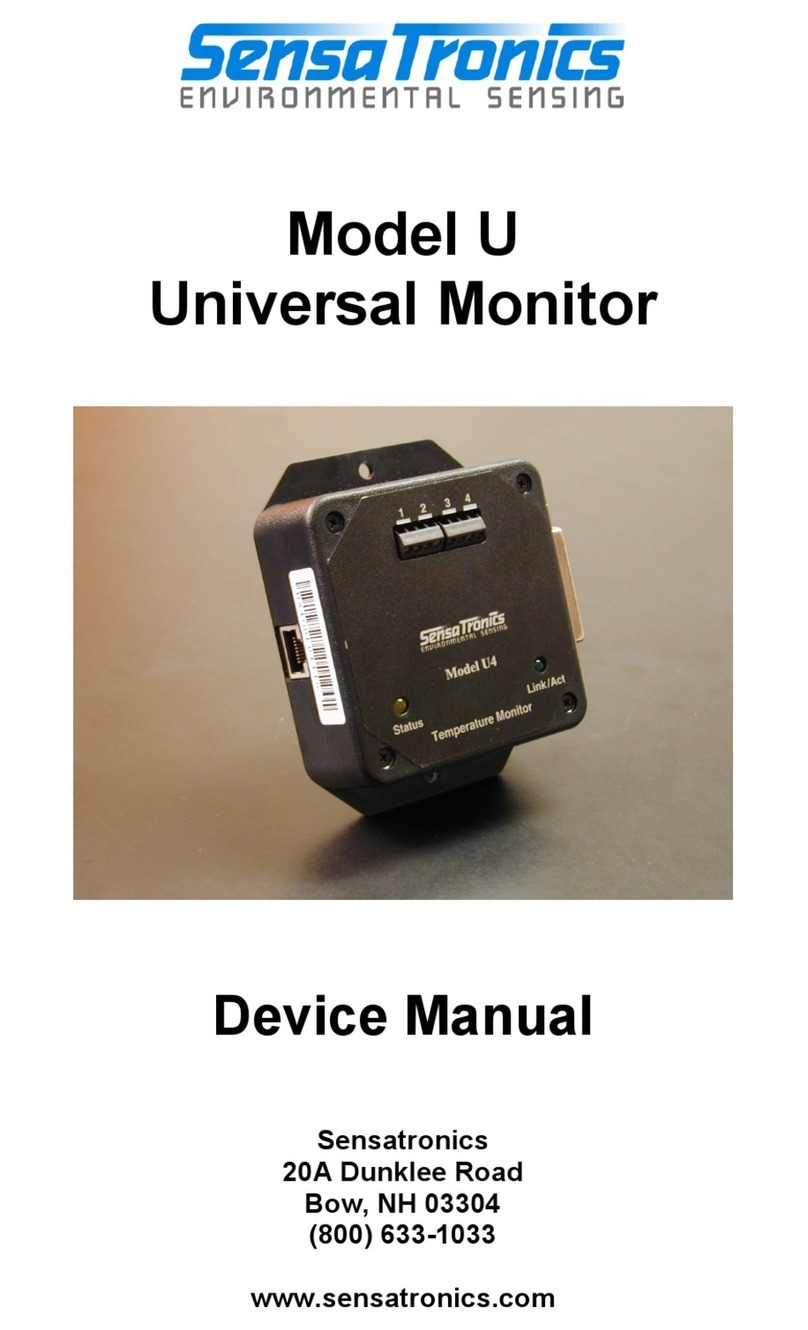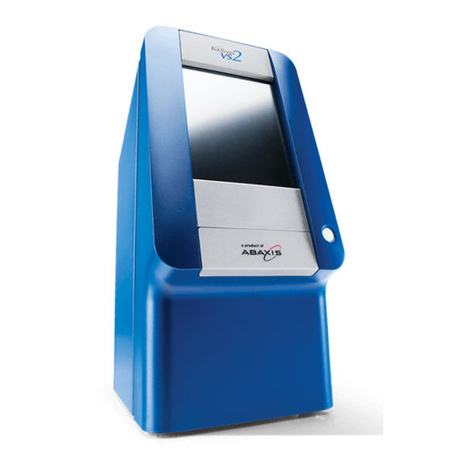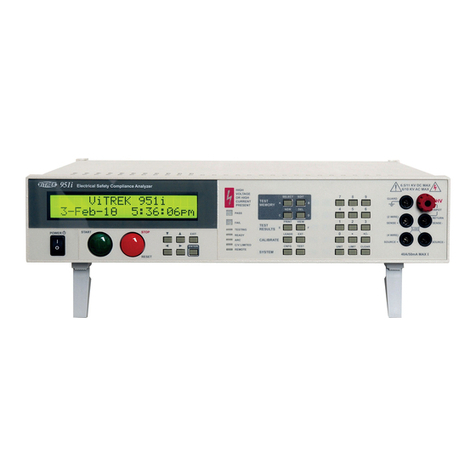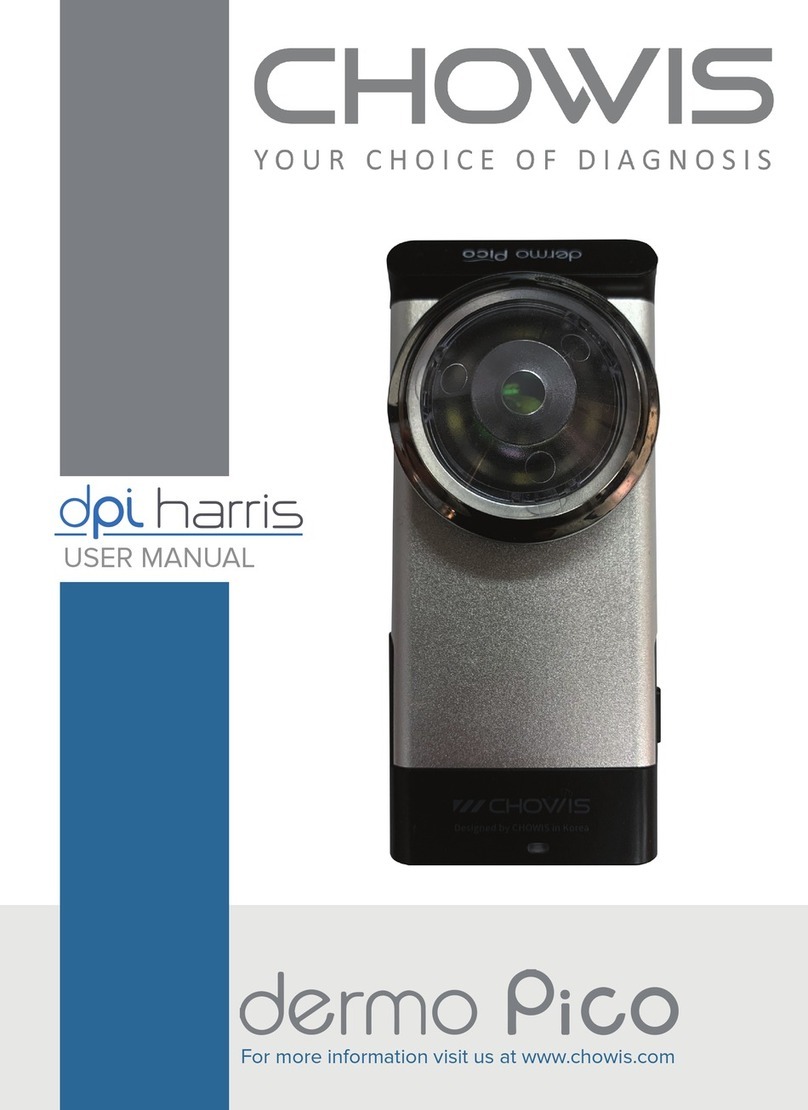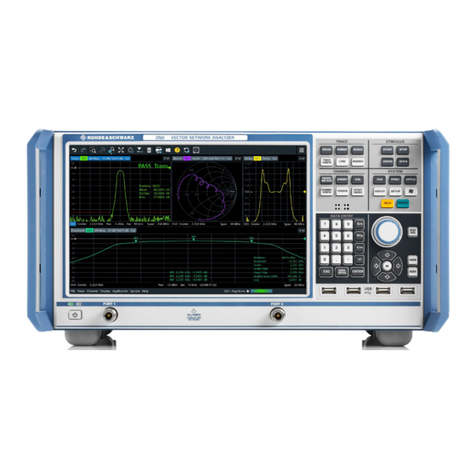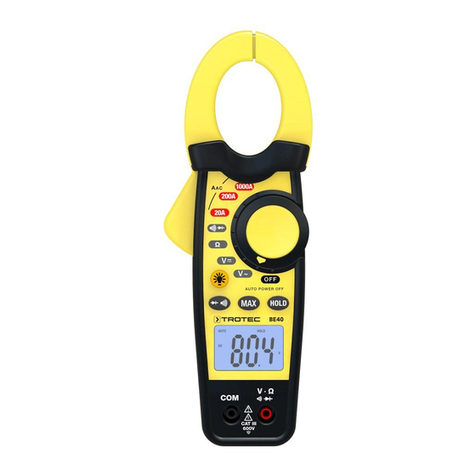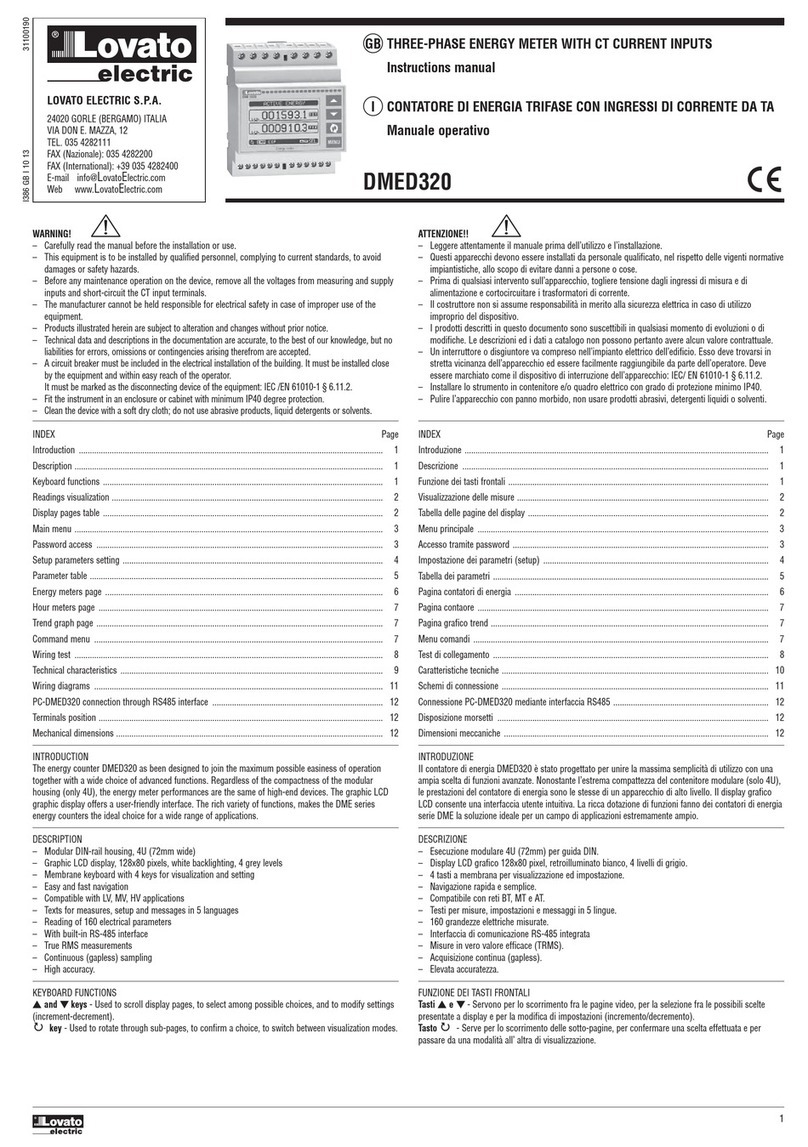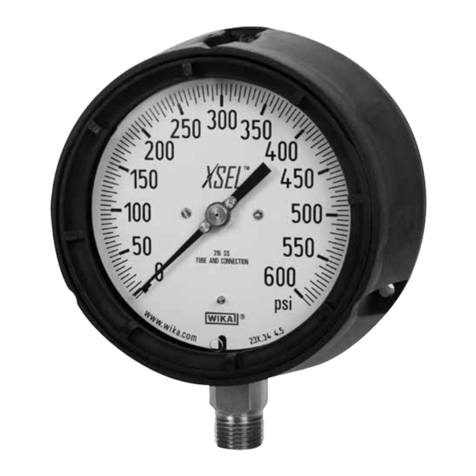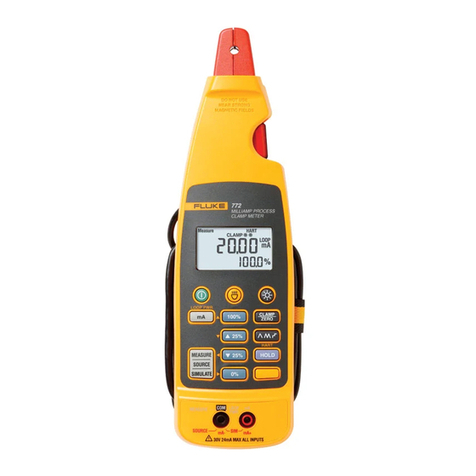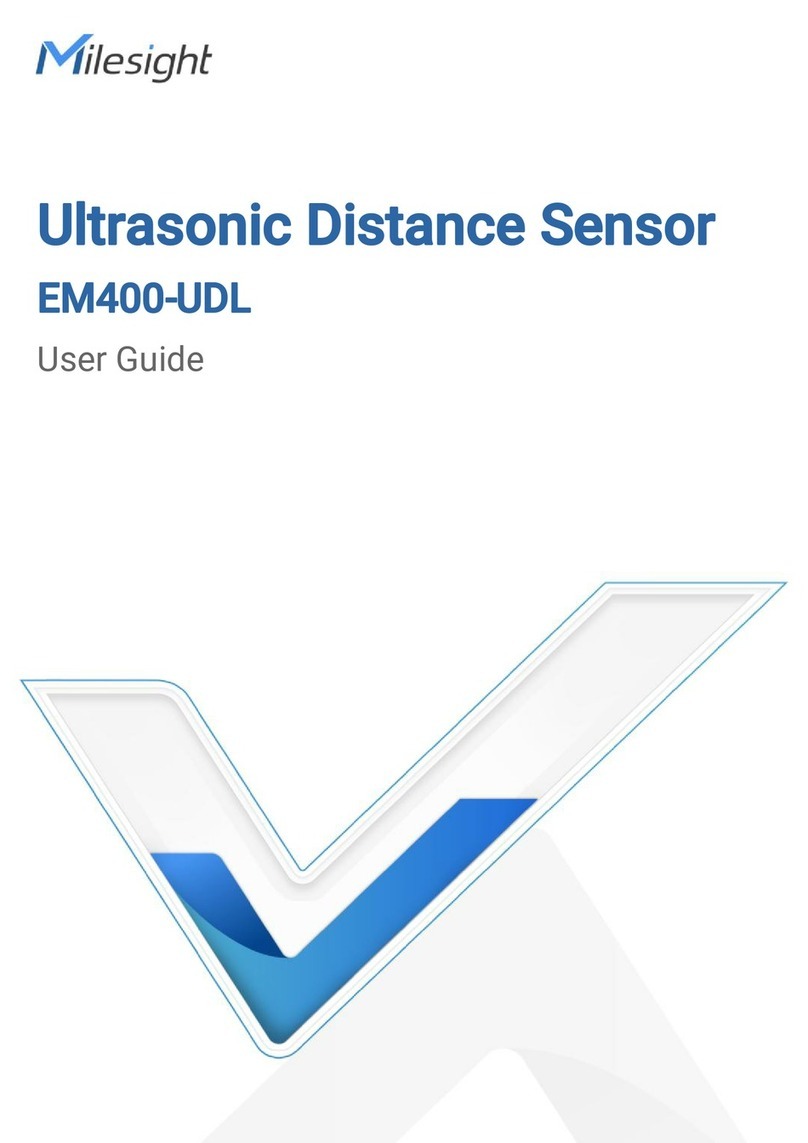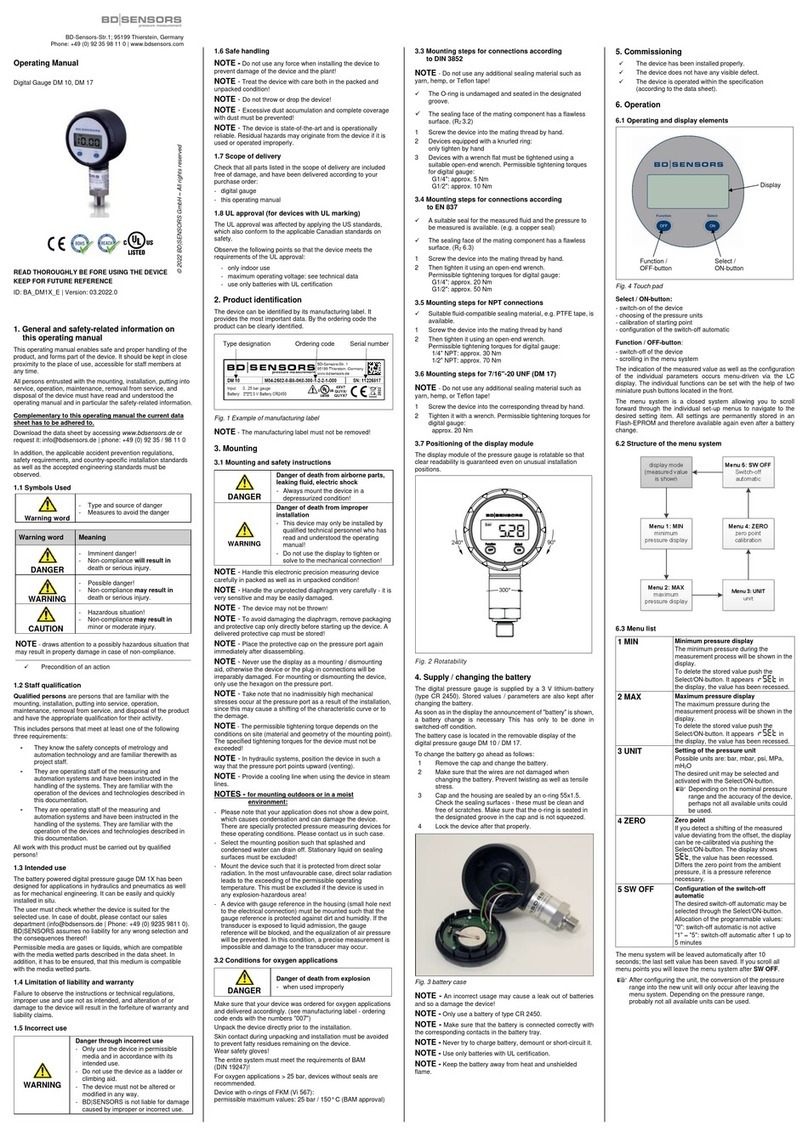Norsonic nor140 Operating and maintenance manual

nor140
SOUND ANALYSER
INSTRUCTION
MANUAL
INSTRUMENT SOFWARE 4.0
A sound level meter with built-in real
time analyser capabilities complying
with international instrument stand-
ards. Parallel octave filters are stand-
ard (optional in some markets), but
the impressive list of optional exten-
sions include third octave filters and
statistics in every frequency band,
multispectrum, reverberation time
measurements, and recording for the
measured sound. The instrument logs
level vs. time (optional) and when it is
equipped with multiple time constants
and the enhanced profile extension, a
multitude of functions is logged simul-
taneously. The more than 120 dB dy-
namic range eliminates the need for
range setting. A large memory, SD-
card and high-speed data transfer
rates complete a user-friendly solution.

Nor140 User Guide – February 2017 Edition
Im140_1Ed7R1En
Norsonic is a registered trademark of Norsonic AS. All other
brand or product names are trademarks or registered trade-
marks of their respective companies.
Every effort has been made to supply complete and accurate
information. However, Norsonic AS assumes no responsibil-
ity for the use of – nor for the consequential damages of the
use of – this information and/or the instrumentation described
herein. Furthermore Norsonic AS assumes no responsibility
for any infringement of the intellectual property rights of third
parties, wherever applicable, which would result from such
use.
Norsonic AS reserves the right to amend any of the infor-
mation given in this manual in order to take account of new
developments.
If you wish to communicate with us, please feel welcome.
Our address is:
Norsonic AS, P.O. Box 24, N-3421 Lierskogen, Norway
Find us on the web: www.norsonic.com
Tel: +47 3285 8900,
Fax: +47 3285 2208
e-mail: [email protected]
Copyright © Norsonic AS 2016l rights reserved

iii
Norsonic Nor140
Instruction Manual
iii
Norsonic Nor140
Instruction Manual
Finding the information you need
Note that the instruction manual describes a fully
equipped instrument. Your version may not have all the
optional extensions available. Extensions may, howev-
er, be installed as retrofit any time.
Detailed technical specifications are found in the last
regular paragraph.
Our objective with this manual has been to address
your goals and needs. Please let us know how well we
succeeded!
Thank you for choosing Norsonic! The Nor140 has
been designed to give you many years of safe, reliable
operation.
Your approach to the Nor140 documentation de-
pends on what you want to do and how much you al-
ready know.
The Nor140 Instruction Manual is divided into
several sections plus an index. Each section provides
useful and in depth information about the measure-
ment features. Depending on your requirements and
your familiarity with sound measurements as such, you
may find that you use some parts of this manual quite
often and others not at all.


v
Norsonic Nor140
Instruction Manual
Contents
Chapter 1 Introducing the Nor140 sound level meter....................................................................1
Modular design................................................................................................................................... 1
The functions available....................................................................................................................... 1
The MODE and SETUP buttons ......................................................................................................... 1
Global and Mode dependent parameters ......................................................................................... 1
The main features – an overview........................................................................................................ 2
Real time frequency analysis ............................................................................................................. 3
Time profile measurements................................................................................................................ 4
Multispectral measurements .............................................................................................................. 5
Source coding .................................................................................................................................... 5
Recording the sound.......................................................................................................................... 6
Excellent for noise monitoring ........................................................................................................... 6
The principle of optional extensions................................................................................................... 6
Transducers........................................................................................................................................ 6
Check which extensions are installed................................................................................................ 7
Workload............................................................................................................................................. 7
Chapter 2 Taking a closer look at the instrument........................................................................10
Switching ON/OFF ............................................................................................................................10
On the use of batteries ......................................................................................................................10
Low Voltage Situations .....................................................................................................................11
Marks on the lower line of the display ...............................................................................................13
The input menu..................................................................................................................................14
Selecting language............................................................................................................................14

vi
Contents
Chapter 3 Calibrating the instrument ...........................................................................................16
When to calibrate ..............................................................................................................................16
No need to adjust the full scale setting.............................................................................................16
Carrying out the calibration ...............................................................................................................16
Chapter 4 Simple sound measurements......................................................................................20
Setting the duration .......................................................................................................................... 20
Statistics ............................................................................................................................................21
Instruments with time profile installed .............................................................................................. 22
Setting the time constant.................................................................................................................. 22
Instruments with multiple time constants ......................................................................................... 22
Multiple time constants and statistics .............................................................................................. 22
C or Z as spectral weighting network............................................................................................... 22
Making a measurement.................................................................................................................... 23
Resuming an ended measurement...................................................................................................24
The back-erase function....................................................................................................................24
Displaying the functions measured...................................................................................................24
Displaying the result tables .............................................................................................................. 25
Statistics – displaying the percentiles .............................................................................................. 26
Displaying the percentiles table....................................................................................................... 27
Storing the acquired data................................................................................................................. 27
Printing out the results ...................................................................................................................... 27
User defined table............................................................................................................................ 28
Chapter 5 Frequency analysis.......................................................................................................29
Setting the measurement duration ................................................................................................... 29
Statistics ........................................................................................................................................... 30
Instruments with time profile installed .............................................................................................. 30
Consider setting the time constant .................................................................................................. 30
Setting C or Z as spectral weighting network .................................................................................. 30
Finding the energy level over a part of the frequency range............................................................31
Activating the frequency mode .........................................................................................................31
Switching to displaying the spectrum .............................................................................................. 32
Making a frequency analysis ........................................................................................................... 32
Resuming an ended measurement.................................................................................................. 33
The back-erase function................................................................................................................... 33
Displaying the functions measured.................................................................................................. 34

vii
Norsonic Nor140
Instruction Manual
No SPL after the measurement ....................................................................................................... 34
Displaying the result tables .............................................................................................................. 34
NC, NR and RC Mark II rating .......................................................................................................... 38
Chapter 6 Basic time profile measurements................................................................................40
Global vs. profile............................................................................................................................... 40
Making measurements..................................................................................................................... 43
Presenting the L(t) as a table ........................................................................................................... 44
Chapter 7 Moving Leq.....................................................................................................................45
Chapter 8 Enhanced time profile measurements........................................................................48
Selecting which functions to log ...................................................................................................... 48
Copy the setting to Prnt/Xfer ............................................................................................................ 49
Setting the time resolution................................................................................................................ 49
Measuring in enhanced mode ..........................................................................................................51
Displaying the functions measured...................................................................................................51
Presenting the L(t) as a table ............................................................................................................51
Chapter 9 Adding markers to a measurement.............................................................................52
The keys to use................................................................................................................................. 52
Other markers inserted by the instrument........................................................................................ 53
Instrument markers have priority...................................................................................................... 53
Marker overview ............................................................................................................................... 53
Chapter 10 Multispectrum measurements.....................................................................................54
Setting up for multispectrum ............................................................................................................ 54
Instruments equipped with basic profile extension ......................................................................... 54
Making multispectrum measurements ............................................................................................. 55
The result tables ............................................................................................................................... 57
Chapter 11 Engineering units..........................................................................................................60
Introduction....................................................................................................................................... 60
Selecting Engineering Units ............................................................................................................. 60
How values are indicated ................................................................................................................. 60
Relation between dB and EU ............................................................................................................61
Calibration ........................................................................................................................................61

viii
Contents
Chapter 12 Memory handling...........................................................................................................63
Memory structure ............................................................................................................................. 63
Internal memory size ........................................................................................................................ 63
Select the device for storing............................................................................................................. 64
SD-card memory.............................................................................................................................. 64
Format............................................................................................................................................... 64
Storing a measurement setup .......................................................................................................... 64
General ............................................................................................................................................. 65
Global parameters............................................................................................................................ 65
Mode dependent parameters .......................................................................................................... 66
Storing a measurement .................................................................................................................... 66
Retrieving stored setups and data ................................................................................................... 66
Standard set-up................................................................................................................................ 67
Clearing files and folders in the memory ......................................................................................... 69
Clearing a single file ......................................................................................................................... 69
Clearing folders or the entire memory.............................................................................................. 69
Chapter 13 Automatic storing of data and noise monitoring.......................................................71
Automated storage of measured data...............................................................................................71
Available storage modes...................................................................................................................71
Synchro – an example .......................................................................................................................72
Setting the storage mode ................................................................................................................. 73
Chapter 14 Making hardcopies........................................................................................................74
Setting up for printouts ......................................................................................................................74
Printing out measured data ...............................................................................................................74
Chapter 15 Transfer of data to a PC................................................................................................76
Select USB or serial.......................................................................................................................... 77
NorXfer installation procedure.......................................................................................................... 77
Installation of USB drivers for Nor140 ............................................................................................. 78
Quick Reference Guide – transfer and convert a measurement to Excel ....................................... 80
Virtual Instrument – Nor1036 Installation procedure........................................................................ 82
Using Virtual Instrument Nor1036 .................................................................................................... 82

ix
Norsonic Nor140
Instruction Manual
Chapter 16 Signal input and output................................................................................................83
Signal input....................................................................................................................................... 83
IEPE .................................................................................................................................................. 83
Noise output ..................................................................................................................................... 84
RPM .................................................................................................................................................. 84
Signal output..................................................................................................................................... 84
Chapter 17 Trigger.............................................................................................................................85
General ............................................................................................................................................. 85
Setting the trigger condition............................................................................................................. 86
Manual trigger .................................................................................................................................. 86
Clock trigger ..................................................................................................................................... 86
External trigger ................................................................................................................................. 87
Level above-trigger .......................................................................................................................... 87
Chapter 18 Recording the sound ....................................................................................................89
Formats............................................................................................................................................. 89
Recording gain ................................................................................................................................ 89
Recording duration........................................................................................................................... 90
Making a recording .......................................................................................................................... 90
Setup for a recording.........................................................................................................................91
Setup how to start a recording ..........................................................................................................91
Manual trigger ...................................................................................................................................91
External trigger ..................................................................................................................................91
Level above-trigger .......................................................................................................................... 92
Listening ........................................................................................................................................... 92
Insert a reference tone as a recording............................................................................................. 93
Chapter 19 Reference Spectrum .....................................................................................................94
General ............................................................................................................................................. 94
Activating the Reference Spectrum features ................................................................................... 94
Selecting the Reference Spectra ..................................................................................................... 94
Using a previously measured spectrum .......................................................................................... 95
Entering a new Reference Spectrum manually ................................................................................ 95
Editing a selected Reference Spectrum .......................................................................................... 96
A-pre-weighted Reference Spectrum .............................................................................................. 96

x
Contents
“Go / NoGo” Quality Control feature ................................................................................................ 96
Digital output lines.............................................................................................................................97
Chapter 20 Noise Generator ............................................................................................................98
General ............................................................................................................................................. 98
Selecting noise type and level ......................................................................................................... 98
Adjustments for reverberation measurement ................................................................................... 99
Standard Set Up ............................................................................................................................... 99
Equalization of noise spectrum ........................................................................................................ 99
Chapter 21 Compensation and correction...................................................................................100
General ........................................................................................................................................... 100
Use of windscreen.......................................................................................................................... 100
Preamplifier correction ....................................................................................................................101
Random incidence and diffuse sound fields ..................................................................................101
Measurement of low sound levels ...................................................................................................101
Measuring the self-noise ................................................................................................................ 102
Measurement of high sound levels ................................................................................................ 102
Chapter 22 Reverberation time measurements...........................................................................104
What is reverberation time?............................................................................................................ 104
Calculating the reverberation time ................................................................................................. 105
Measurement with noise excitation ................................................................................................ 105
Measurement with impulse excitation ............................................................................................ 106
Measurement with swept sine excitation.........................................................................................107
Implementation in Nor140 .............................................................................................................. 108
Excitation signals............................................................................................................................ 109
Minimum reverberation time possible ............................................................................................ 109
Maximum reverberation times........................................................................................................ 109
Measuring according to the integrated impulse response method................................................ 111
Measuring according to interrupted noise method.........................................................................113
Measuring according to interrupted noise method with external noise..........................................115
Measuring according to the Swept Sine method............................................................................116

xi
Norsonic Nor140
Instruction Manual
Chapter 23 Sound Power................................................................................................................118
About sound power measurements ................................................................................................118
Rectangular parallelepiped.............................................................................................................119
Hemispherical measurement surface .............................................................................................119
Hemispherical microphone positions .......................................................................................120
Additional microphone positions ..............................................................................................120
Parallelepiped measurement surface .............................................................................................122
Microphone positions................................................................................................................122
Additional microphone positions ..............................................................................................122
Reducing the number of positions............................................................................................123
Mic. positions – one reflecting plane.........................................................................................123
More than one reflecting plane .................................................................................................123
Sound power – acoustic environment requirements.......................................................................125
Specific requirements .....................................................................................................................126
The K2A factor ..................................................................................................................................126
Approximate method.......................................................................................................................126
Using reverberation time instead ....................................................................................................126
Test room qualification requirements .............................................................................................127
Measuring the sound power............................................................................................................127
Making measurements....................................................................................................................127
Background noise .......................................................................................................................... 130
Measurement surface..................................................................................................................... 130
Sound power results........................................................................................................................131
Chapter 24 Building Acoustics......................................................................................................132
Introduction......................................................................................................................................132
Terms and definitions for airborne sound insulation................................................................ 134
Terms and definitions for impact sound insulation .................................................................. 135
Survey and engineering methods............................................................................................ 135
Airborne sound insulation............................................................................................................... 136
General..................................................................................................................................... 136
Noise excitation........................................................................................................................ 136
Measurement of sound level.................................................................................................... 136
Measurement of reverberation time ......................................................................................... 136
Calculating the Airborne Sound insulation according to the Survey Method.................................137
Displaying of results..................................................................................................................137

xii
Contents
Calculating the Airborne sound insulation according to the Engineering method ....................... 139
Source room level .................................................................................................................... 139
Receiving room level.................................................................................................................140
Background noise .....................................................................................................................140
Reverberation time ....................................................................................................................141
Display of results.......................................................................................................................142
Spectrum adaptation terms .................................................................................................... 143
Alternative national standards.................................................................................................. 143
Store and recall .............................................................................................................................. 144
Averaging levels or level-differences ............................................................................................. 144
Corner measurement for small rooms............................................................................................ 145
Equalizing the excitation level ........................................................................................................ 145
Impact sound insulation ..................................................................................................................146
Impact excitation.......................................................................................................................146
Measurement of sound level.....................................................................................................146
Reverberation time ....................................................................................................................146
Calculating the Survey result...........................................................................................................146
Impact sound insulation according to the French national Standard.............................................147
Calculating the impact sound insulation according to the Engineering method ...........................148
Receiving Room Level ..............................................................................................................148
Background noise .....................................................................................................................149
Reverberation time ....................................................................................................................149
Display of results.......................................................................................................................149
Alternative national Standards ...................................................................................................... 150
Store and recall .............................................................................................................................. 150
Averaging levels from multiple tapping machine positions ........................................................... 150
Corner measurement for small rooms.............................................................................................151
Partly re-use of previous measurements.........................................................................................151
Facade insulation ............................................................................................................................151
General .....................................................................................................................................151
Terms and definitions................................................................................................................151
Noise excitation.........................................................................................................................152
Measurement of sound level.................................................................................................... 153
Measurement of reverberation time ......................................................................................... 153
Calculating the result ............................................................................................................... 153

xiii
Norsonic Nor140
Instruction Manual
Service equipment sound pressure levels..................................................................................... 153
Terms and definitions for service equipment measurements........................................................ 154
Service equipment sound pressure levels – Survey method......................................................... 154
Corner position Sound Pressure Level........................................................................................... 154
Reverberant position Sound Pressure Level.................................................................................. 154
Reverberation time ......................................................................................................................... 155
Display of results ............................................................................................................................ 155
Service equipment sound pressure levels –Engineering method ................................................. 155
Corner position Sound Pressure Level........................................................................................... 155
Reverberant position Sound Pressure Level.................................................................................. 156
Reverberation time ......................................................................................................................... 156
Display of results ............................................................................................................................ 156
Remote operation from a PC .......................................................................................................... 158
Swept-Sine measurement technique ............................................................................................. 158
Swept-Sine measurement of sound level .................................................................................159
Swept-Sine measurement of reverberation time.......................................................................159
Chapter 25 Speech Intelligibility by STIPA...................................................................................160
Introduction – What is STIPA .......................................................................................................... 160
Speech transmission index – STI ................................................................................................... 160
Development of STI ........................................................................................................................ 160
RASTI and STIPA.............................................................................................................................161
How is STIPA measured ..................................................................................................................162
CIS .................................................................................................................................................. 163
Units included in delivery ............................................................................................................... 163
Software option for Nor140............................................................................................................. 163
Excitation file - a zipped file ........................................................................................................... 163
Excel sheet .................................................................................................................................... 163
Measurement overview .................................................................................................................. 164
General instrument description...................................................................................................... 164
Selecting a loudspeaker for the excitation ..................................................................................... 165
Loudspeaker or electrical excitation .............................................................................................. 165
Performing a measurement ............................................................................................................ 166
Set-up ............................................................................................................................................. 166
Set the speech level ....................................................................................................................... 166

xiv
Contents
Select the STI-mode....................................................................................................................... 166
Making a measurement.................................................................................................................. 166
Store and recall the result................................................................................................................167
Correcting for background and occupancy noise ......................................................................... 168
Real background noise .................................................................................................................. 169
Precision of the STIPA method....................................................................................................... 169
Analysis and interpretation of the results ....................................................................................... 169
Limitations of the STIPA method .................................................................................................... 169
Using Excel for further calculations ................................................................................................170
STI-Calc...........................................................................................................................................170
Specifications ..................................................................................................................................170
Chapter 26 FFT measurement mode.............................................................................................171
Introduction......................................................................................................................................171
How to select the FFT-mode ...........................................................................................................171
Making a measurement...................................................................................................................171
Calibration .......................................................................................................................................172
Corrections ......................................................................................................................................172
Storing the result..............................................................................................................................173
Specification for FFT .......................................................................................................................173
Chapter 27 Measuring vibration using Nor140 ............................................................................174
Introduction...................................................................................................................................... 174
Accelerometer .................................................................................................................................174
IEPE-type.........................................................................................................................................175
Charge type.....................................................................................................................................176
Velocity and displacement ..............................................................................................................177
Chapter 28 Audiometer calibration ..........................................................................................178
Chapter 29 Technical specifications.............................................................................................179
Type of instrument ...........................................................................................................................179
Analogue inputs ..............................................................................................................................179
Microphone input socket ............................................................................................................... 180
Highpass filter ................................................................................................................................ 180
Analogue to digital conversion....................................................................................................... 180
Frequency weightings .....................................................................................................................181

Weighting networks...................................................................................................................181
Filters.........................................................................................................................................181
Level detector............................................................................................................................181
Time weightings and measured functions ......................................................................................181
Level distribution .............................................................................................................................182
Indication range...............................................................................................................................182
Self-noise levels...............................................................................................................................182
Z-wide considerations ...............................................................................................................182
Measurement duration and resolution ........................................................................................... 183
Timing accuracy....................................................................................................................... 183
Measurement range ....................................................................................................................... 184
Power supply .................................................................................................................................. 184
Display............................................................................................................................................ 185
Keyboard ........................................................................................................................................ 185
Adjustment of indicated levels ....................................................................................................... 185
Windscreen..................................................................................................................................... 186
High levels ...................................................................................................................................... 186
Preamplifier attenuation...................................................................................................................187
Self-noise compensation ......................................................................................................... 188
Diffraction around the instrument casing....................................................................................... 188
Signal output................................................................................................................................... 190
Serial I/O port ................................................................................................................................. 190
Digital inputs................................................................................................................................... 190
Digital outputs................................................................................................................................. 190
Digital output control lines...............................................................................................................191
AC-out .............................................................................................................................................192
RPM .................................................................................................................................................192
USB interface ..................................................................................................................................192
SD-card ...........................................................................................................................................192
Data storage ....................................................................................................................................192
Environmental conditions ................................................................................................................192
Warm-up time ................................................................................................................................. 193
Sensitivity for vibration.................................................................................................................... 193
Sensitivity for magnetic fields......................................................................................................... 193
Size and weight .............................................................................................................................. 193
Information for conformance testing .............................................................................................. 193


nor140
SOUND ANALYSER


1
Norsonic Nor140
Instruction Manual
1
Norsonic Nor140
Instruction Manual
Introducing the Nor140
sound level meter
Modular design
The Nor140 comes with an extensive set of functions
available in its basic version. Many other functions are
available as optional extensions.
The modular design of the Nor140 enables func-
tional expansion to take place when you need it and
not necessarily at the time you purchase the instru-
ment. All installed options remain in the instrument and
there is no need for further loading of the options when
used.
The functions available
Even in the basic version the functions available with
the Nor140 include the following:
• SPL The Instantaneous Sound Pressure Level
• LMAX The Maximum Sound Pressure Level
• LMIN The Minimum Sound Pressure Level
• Leq The Integrated Averaged SPL
• LEThe Sound Exposure Level
• LPEAK The Maximum Peak Level
The spectral weighting functions A- and C- or Z-weight-
ing are available for all functions including the LPEAK.
The Z-weighting as specified in IEC 61672-1
replaces Lin or Flat as these have not been properly
defined by any standard.
As an optional extension the instrument functionality
can be expanded to include the ability to measure
with all three time constants (F, S, I) applied simultane-
ously.
The MODE and SETUP buttons
Two buttons are often used to change the behaviour of
the instrument.
The MODE button selects the main operating modes
In the rest of this instruction manual it is assumed you
are in Level Mode unless otherwise is indicated.
The SETUP button activates the set up menu sys-
tem that is different dependant on the operating mode.
Global and Mode dependent parameters
Several set up parameters are valid for all types of
operation of this analyser, while others are mode
dependent. These parameters, which are not global,
can be adjusted in one mode of operation for the

22 Introduction
instrument without affecting the value of the same
parameters in another mode of operation. If you close
a mode and return to it later, the value last used for
these parameters will be automatically loaded.
The main features – an overview
Level vs. time. The electronic level recorder concept
is available in two versions – basic and enhanced.
While the basic version logs the equivalent level, the
maximum level and the peak level, the enhanced
version is capable of logging any combination of
functions available with the Nor140. In addition it
allows source coding.
Another difference important for some applications
is that while the basic version has a time resolution
ranging from 1 second and upwards, the enhanced
version has a time resolution from 50 ms and upwards
in 25 ms steps. Above 1 second the time resolution is
available in 1 second steps for both versions.
Frequency analysis. When fitted with the frequency
analysis extensions the Nor140 can make real time
frequency analysis in octaves or third-octaves.
The functions measured are the equivalent level,
the maximum level and the minimum level.
The frequency range is 0,4 Hz to 20 kHz and thus
covers both the audio and the vibration range.
Statistics. The optional extension 4 adds statistical
distribution to the Nor140 functionality. There are eight
percentiles shown, out of which one is freely selecta-
ble. The class width is 0.2 dB over the entire 130 dB
range.
The statistical distribution calculation applies to the
spectral weighting networks (Aand Zor C) as well as
all the individual filter bands (if applicable).
The back-erase feature, which deletes up to 20 (se-
lectable 0 - 20) of the most recent seconds of acquired
global data prior to a pause upon resuming, updates
the statistics buffers as well to maintain consistency.
For the statistical sampling the instrument makes
use of the Ftime constant, irrespective of what time
constant(s) the frequency analysis as such employs.
The fixed percentile levels offered by option 4 are
1.0%, 5.0%, 10.0%, 50%, 90%, 95% and 99%.
In addition, one of these percentiles is subject to
user-definition and can be set to anything from 0.1%
to 99.9%, both extremes included. Note that you don’t
have to define the percentile prior to the measurement.
You may redefine the percentile as many times as you
like – even after the measurement! For every frequency
band measured!
However, once you start another measurement or
switch off the instrument, only the selected percentiles
will be available to keep the amount of stored data
lower.
Other manuals for nor140
1
Table of contents
Other Norsonic Measuring Instrument manuals

Norsonic
Norsonic nor145 User manual

Norsonic
Norsonic Nor1545 Instruction Manual

Norsonic
Norsonic nor121 User manual
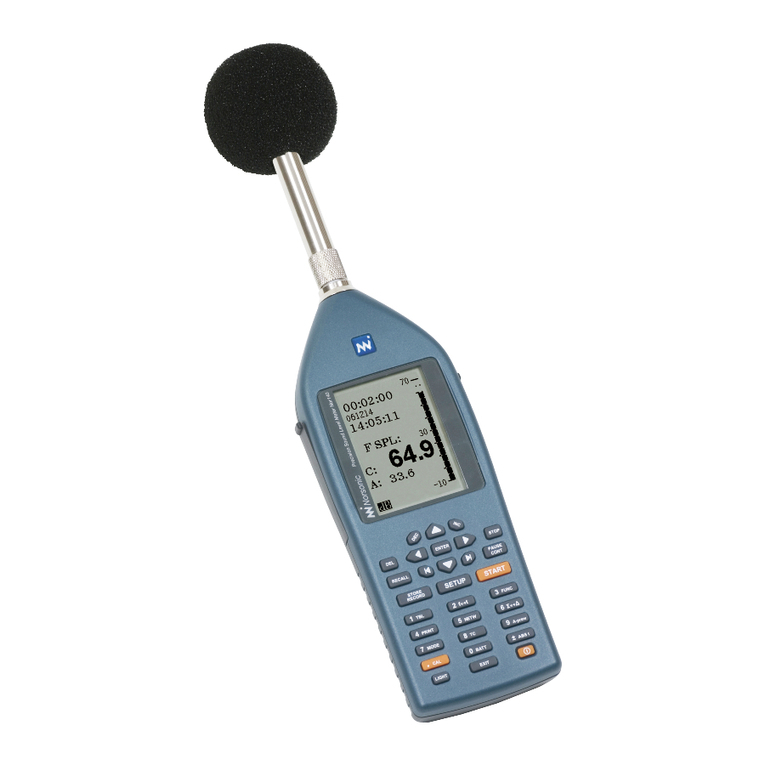
Norsonic
Norsonic nor140 User manual

Norsonic
Norsonic nor145 User manual

Norsonic
Norsonic 140 User manual
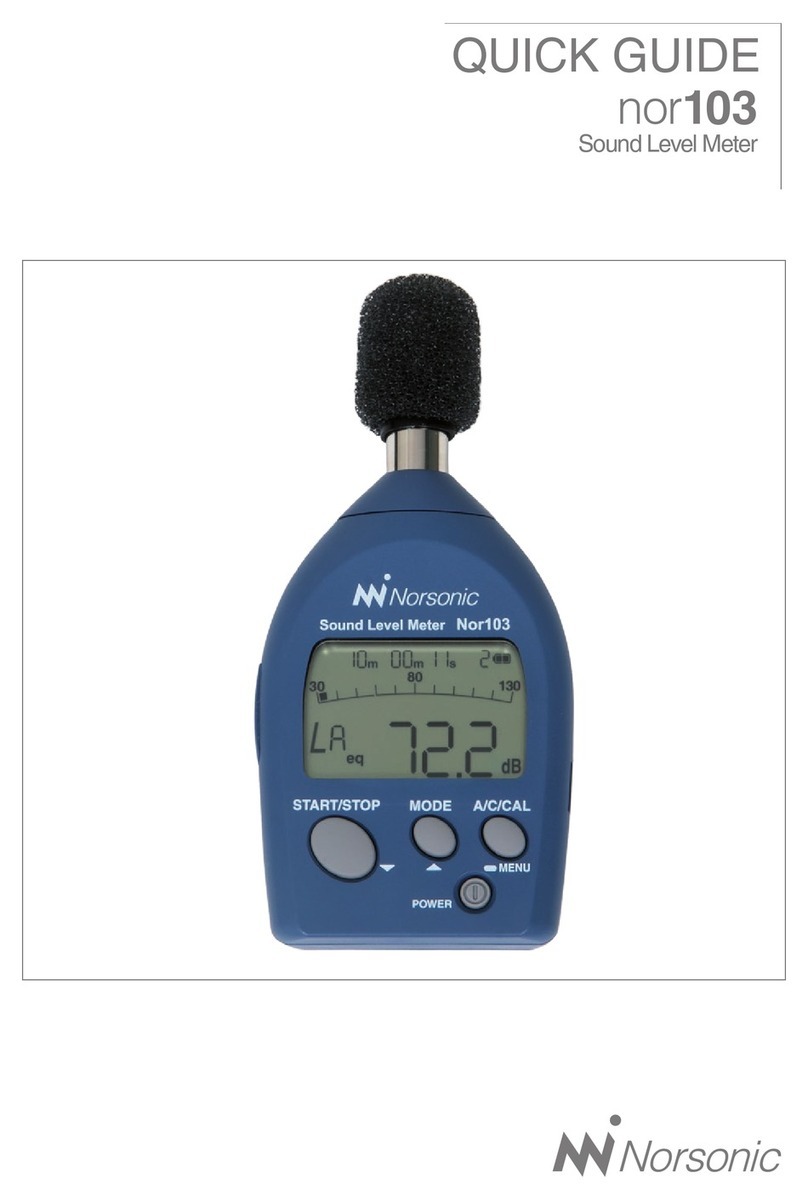
Norsonic
Norsonic nor103 User manual

Norsonic
Norsonic nor118 User manual

Norsonic
Norsonic NOR150 User manual

Norsonic
Norsonic nor103 User manual

